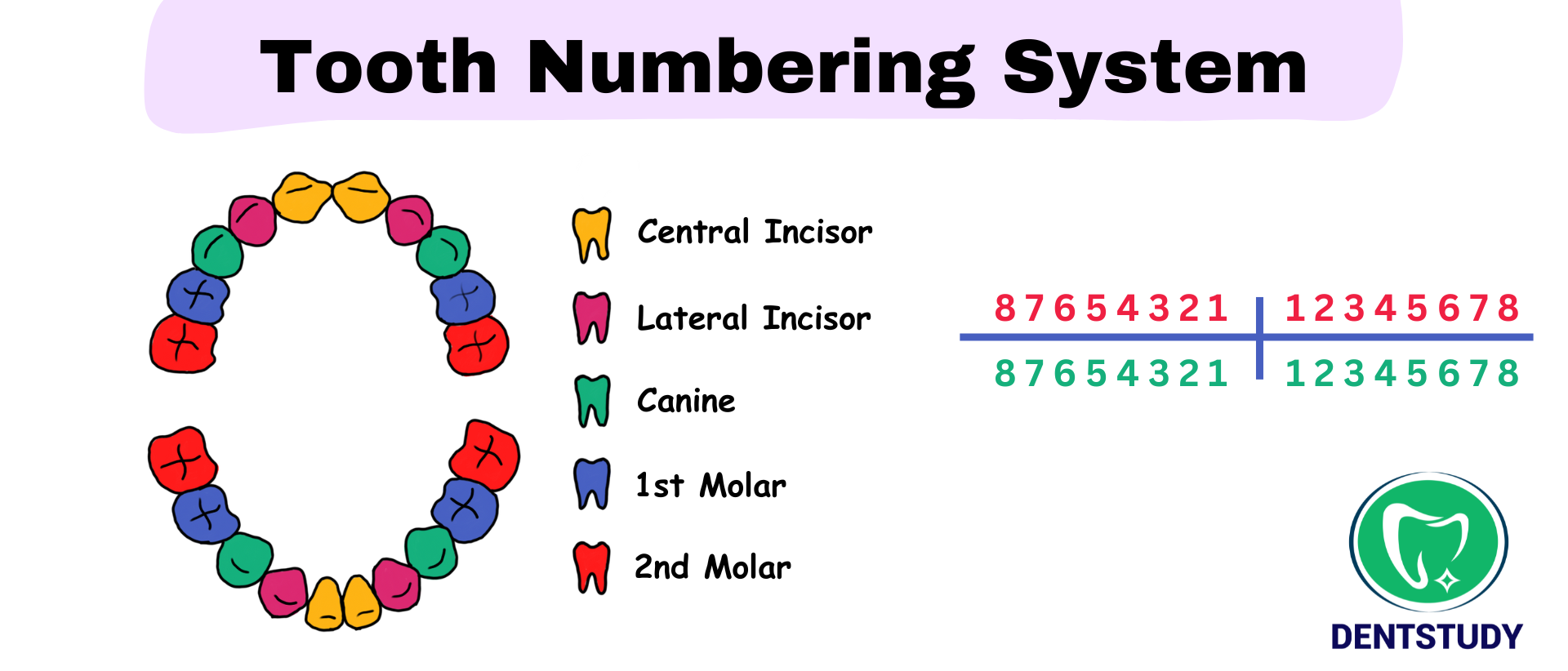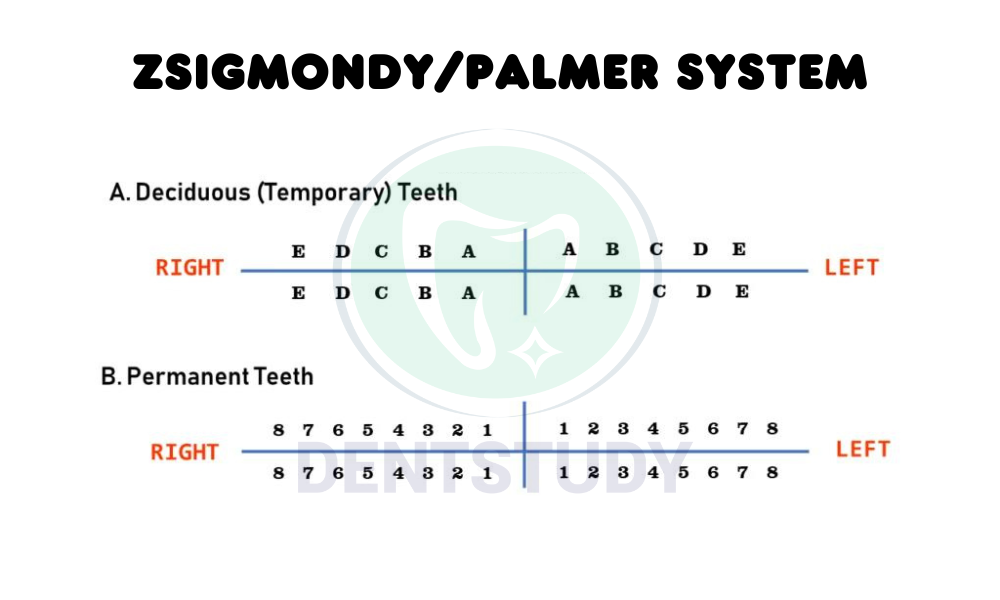
TOPIC: TOOTH NUMBERING SYSTEM
📌 KEY POINTS:
Tooth numbering systems were originally developed as a shortcut to minimize the effort of hand-written record-keeping in dentistry. To identify a specific tooth, arch, quadrant, and the tooth’s name.
Currently, only three most popular systems are favored worldwide. These popular systems are
as follows:
• Zsigmondy/Palmer (the eight-tooth quadrant) system
• Universal system
• FDI/ two-digit system.
]
🔍 Zsigmondy/Palmer System
- First Introduced in 1861 by Viennese dentist Adolf Zsigmondy.
- Tooth numbering for permanent – Each quadrant has 8 teeth, numbered 1 (central incisor) to 8 (third molar).
- Commonly used in orthodontics and oral surgery.
- Uses symbols to indicate quadrants (┘└┐┌).
🔍 Universal System
- ADA Recommended
- Proposed in 1882 by German dentist Julius Parreidt
Permanent teeth: Numbered 1 to 32 in a clockwise direction.
Starts from upper right third molar (1) to lower right third molar (32).
- Primary teeth: Lettered A to T, also clockwise.
📍MODIFICATION : In 1967, Goodman suggested using numbers 41–60 instead of A–T for primary teeth.
🔍 FDI System/Two Digit System
- FDI notation system or two-digit system or ISO 3950 notation or International numbering system.
- FDI is denoted as Fédération Dentaire Internationale.
- Adopted in 1970 at the FDI General Assembly, Bucharest.
- As per FDI, following criteria should meet FDI tooth
notation system, i.e.
1. Simple to teach and understand.
2. Easy to pronounce.
3. Easily printable.
4. Easily digitize
5. Easily adapted to standard charts
✅ HOW FDI SYSTEM WORKS:
📍FDI Notation for Permanent Dentition
🔸First digit = quadrant (1 to 4)
🔸Second digit = tooth (1 to 8)
Example: 11 = upper right central incisor
📍FDI Notation for Deciduous Dentition
🔸First digit = quadrant (5 to 8)
🔸Second digit = tooth (1 to 5)
💡NOTE:
Always pronounce the two digits separately (e.g., “one-one” for 11).
Quick Summary Table
| System | Format | Quadrant Logic | Usage |
|---|---|---|---|
| Universal | 1–32 (perm), A–T (pri) | Clockwise from UR → UL → LL → LR | USA, clinical charts |
| FDI | 2-digit (e.g. 11, 65) | Quadrant + Tooth from midline | WHO, worldwide |
| Palmer/Zsigmondy | Number/Letter + symbol | Symbols denote quadrant, numbers from midline | Ortho, UK |



